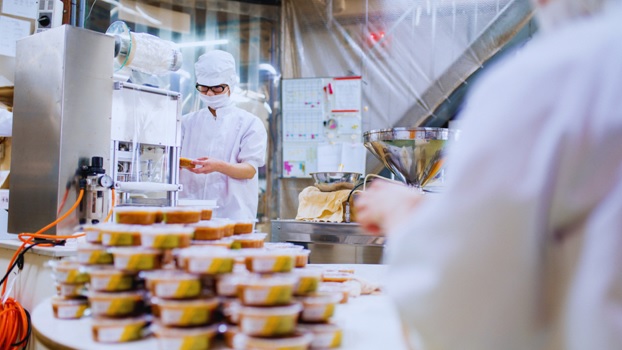How HPLC Keeps Your Food Safe and Tasty
21st Aug 2024

If you’re in the food industry, you already know that keeping food safe and nutritious isn’t just a goal—it’s an obligation. Your customers count on you to serve up more than just a meal - they expect food that's safe to eat. That means you've got to be on the ball regarding safety standards and regulations.
This is where high-performance liquid chromatography (HPLC) comes into play. Think of it as your backstage pass to all the crucial testing that keeps food quality and safety in check.
HPLC in Food Analysis
HPLC isn’t just another lab technique—it’s one of the most reliable ways to separate, identify, and quantify what’s inside a food sample. You can dig into everything from volatile compounds to authenticity checks with HPLC.
For complex analyses such as monitoring mycotoxins or antibiotics, the Pickering Laboratories PCX 5200 Post-Column Derivatizer enhances sensitivity and selectivity, making sure that even trace amounts don’t go unnoticed.
Your customers count on you to serve up more than just a meal - they expect food that's safe to eat. That means you've got to be on the ball when it comes to safety standards and regulations. The bonus? You can pair it with an amperometric detector, opening up even more possibilities for pinpointing vitamins, ions, and other substances in food products.
Why Food Producers Lean on HPLC
It’s not just convenience that keeps HPLC front and center in food analysis. Get the answers you need to keep your business running smoothly - this reliable tool serves as your gateway to effortless food safety regulation compliance. Everything from pesticides to antibiotic residues needs to be detected and dealt with to ensure that the food hitting the shelves is safe.
For example, the Agilent 1100 HPLC System with its DAD detector ensures efficient mixing and pulse-free solvent delivery, which allows for consistently fast and accurate results—ideal for high-throughput food testing environments.
Food producers know that quality control is more than just a safety net - it's about consistently meeting customer expectations, and HPLC helps them do just that. Flavor profiling, for example, can make or break a product’s success. Besides verifying legitimacy, what's the plan for keeping it real? HPLC really delivers when it comes to supporting manufacturers' claims with hard facts.
What HPLC Detects in Food
Let’s get into the nitty-gritty. HPLC isn’t just about making sure your food tastes good—it’s also about catching the harmful substances that could cause serious health issues. Here’s a rundown of some of the problematic things HPLC helps detect:
- Pesticide Residues: With over 1,000 pesticides used globally, it’s no surprise that some of the older, cheaper ones, like DDT and lindane, can hang around in the environment and sneak into the food supply. HPLC is key in catching these residues and ensuring food meets safety standards.
- Antibiotic Residues: Antibiotics in livestock can leave traces in food products like meat, milk, and eggs. These residues can lead to antibiotic resistance, allergic reactions, and even more severe health issues like kidney damage and bone marrow toxicity. HPLC is essential for detecting these residues and protecting consumers.
- Aflatoxins: These toxins, produced by mold, can contaminate crops and pose a serious risk to both human and animal health. Long-term exposure to aflatoxins can cause liver damage and even cancer. Thankfully, HPLC helps food safety experts catch these toxins before they become a problem.
Everyday Uses of HPLC in the Food Industry
High-performance liquid chromatography (HPLC) has become a workhorse in food analysis, helping with a variety of essential tasks, such as:
- Sugar Content Analysis: HPLC routinely measures sugar levels in products like juices, sauces, and baked goods. Whether it's ensuring consistency or meeting dietary regulations, this method offers precise results.
- Phenolic Compound Detection: In products such as tea, wine, and fruits, HPLC identifies and quantifies natural phenolic compounds. These compounds are often linked to flavor, color, and potential health benefits, making their accurate measurement essential.
- Monitoring Biogenic Amines: HPLC is key in monitoring biogenic amines, which form during the fermentation of products like cheese, fish, and sausages. While some amines are harmless, others can cause health issues, making their detection vital.
- Mycotoxin Tracking: Mycotoxins, produced by mold in crops like nuts and grains, pose significant health risks. HPLC plays a crucial role in detecting even trace amounts, helping prevent contaminated products from reaching consumers.
Each of these tasks relies on HPLC’s ability to provide precise, reliable data—keeping products safe, consistent, and up to the highest standards in the food industry.
Why It Matters
At the end of the day, HPLC in the food industry isn’t just about ticking regulatory boxes—it’s about making sure what people eat is safe and delicious. Whether you’re dealing with pesticides, antibiotics, or aflatoxins, HPLC is your tool for keeping food clean, high-quality, and exactly what it’s supposed to be.
So, if you’re working in a lab, making sure your product meets every safety requirement, remember that HPLC has got your back. It’s there to help you produce the best possible food, every single time.
